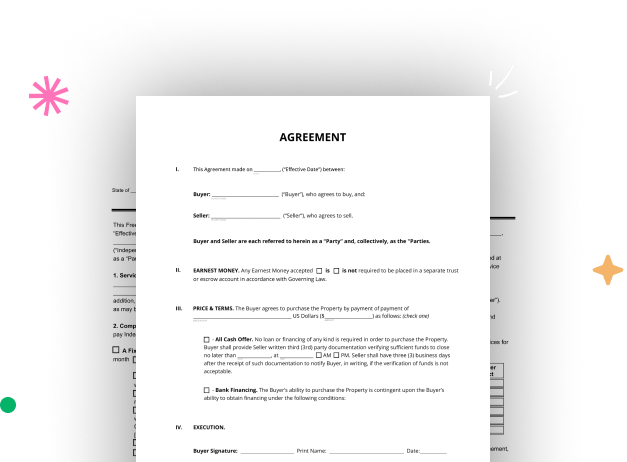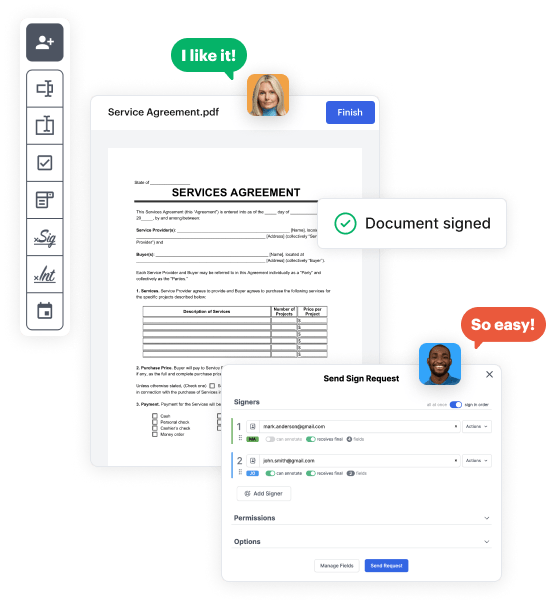

Start by logging into your DocHub account. Utilize the advanced DocHub functionality free for 30 days.
Once logged in, go to the DocHub dashboard. This is where you'll create your forms and handle your document workflow.
Hit New Document and choose Create Blank Document to be redirected to the form builder.
Use the DocHub tools to add and arrange form fields like text areas, signature boxes, images, and others to your form.
Include necessary text, such as questions or instructions, using the text field to assist the users in your form.
Modify the properties of each field, such as making them compulsory or formatting them according to the data you expect to collect. Assign recipients if applicable.
After you’ve managed to design the Personal Injury Legal Document, make a final review of your form. Then, save the form within DocHub, transfer it to your preferred location, or share it via a link or email.